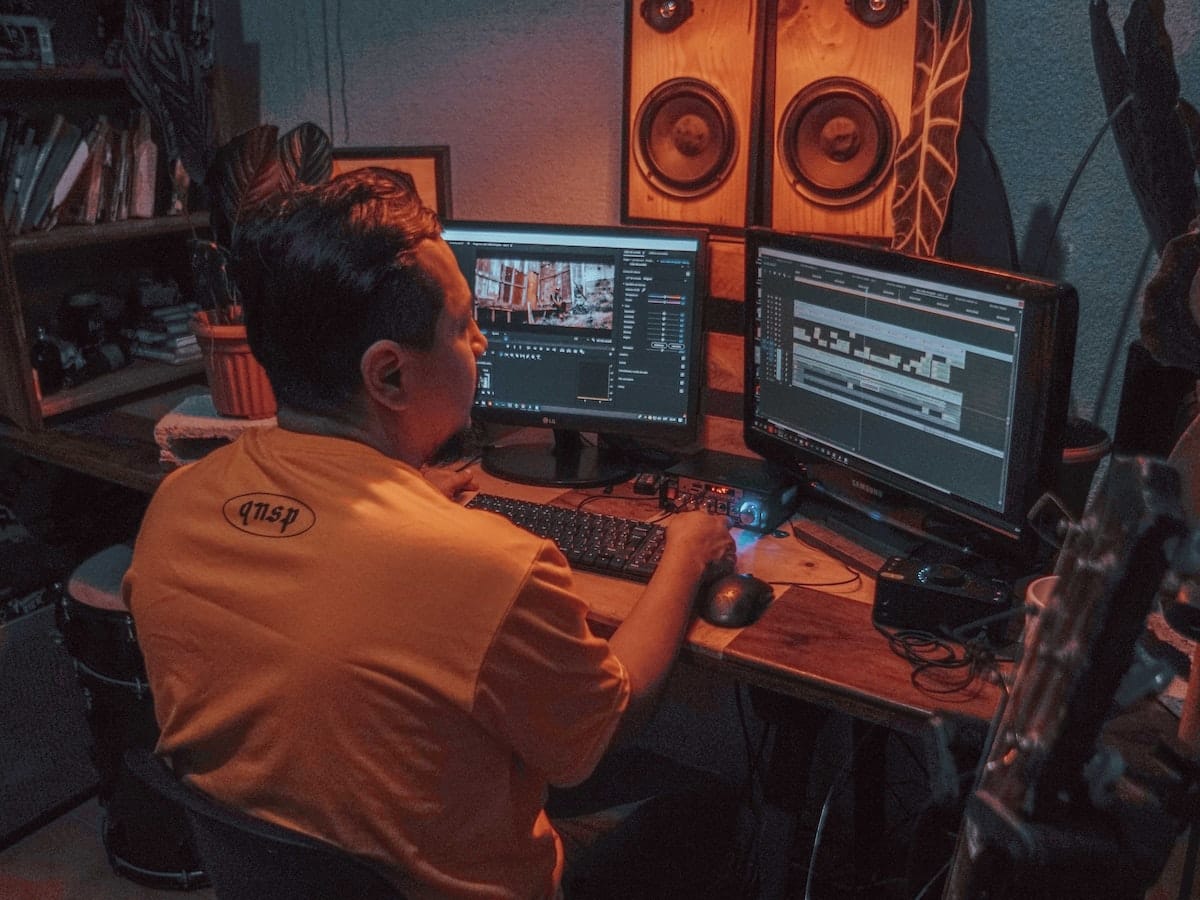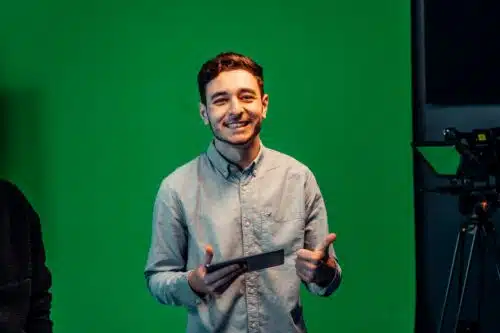Some say the AI generated video revolution is coming. Others say it’s already here. As of this moment, AI powered systems can produce video from text prompts, still images, or audio inputs. Whether those videos are worthy of replacing creator-made content is another story.
Proponents praise how AI can speed up development and reduce costs. More cautious voices warn of deep fakes and misinformation. The copyright issues that plague other AI technologies will certainly pop up here as well.
Just because AI can transform how we create content doesn’t mean humans should bow out of the process. For evidence, see the how-to video created by Wistia’s Head of Production using AI tools. The results were… mostly okay. Not great. Just okay.
How to Create an AI Generated Video with ChatGPT, Synthesia, and Descript – Wistia Blog
Something more complicated, like a software explainer video or a brand story video probably wouldn’t have worked even that well.
What AI Generated Video Technology Does Well
The immediate impact of AI is strongest in the pre- and post-production phases. Creators are already using it for:
- Creating scripts and storyboards
- Selecting and splicing together B-roll
- Video editing and color grading
- Scoring and audio mixing
AI technology can also impact video creation in more subtle ways. For example, it may tell creators whether a given piece of content is worth making in the first place. AI can track user engagement and viewer watch patterns to make informed predictions about what content is likely to keep them engaged the longest.
That’s technology we already have, but may not be using as effectively as possible. AI and machine learning can offer data-driven insights that help us personalize content, create dynamic content, and target advertising. It can also quickly adapt content to perform well across various social media platforms.
Where the Revolution is Still A Long Way off
When it comes to the video itself, AI still has a long way to go. Many generative AI tools create videos with Avatars - animated characters designed to mimic human speech patterns and body language. Most are clunky at best and creepy at worst. Often the tone of speech doesn’t match the words it’s saying. The facial expressions certainly don’t.
Some brands have managed to turn virtual people into marketing assets. Virtual influencers like @imma.gram and @lilmiquela look fairly convincing in still images, but are obviously artificial in video form. Creators get around this with creative marketing.
For example, Miquela is described as a “robot living in LA.” She has 2.7 million followers on instagram, and has modeled for a number of fashion brands. Her fakeness is part of her charm, but that would likely change if all brands were using virtual influencers. For now, a real person is much more believable than an avatar.
Another place that AI doesn’t quite hit the mark is in pacing and storytelling. AI can spot and replicate a pattern, but it can’t make something new. The unique pacing of a Wes Andersen vs Lynne Ramsay can’t be reduced to an equation. Technology tends to be literal, while human minds approach ideas through metaphor, allusion, and story.
So Will AI Generated Video Transform Content Creation?
Overall, the promise of AI feels bigger than the current technology. Read a dozen blog posts on the topic and you’ll find people talking about all the things AI can do. But test out a few AI video generation tools and you’ll find that many of those tools can do only one part of the production process well, or trade quality for speed.
We’ve heard claims that an AI video is often “indistinguishable” from one created by professionals, but haven’t seen many actual AI created videos that live up to that promise, yet.
Here’s an AI generated video created by Jon Finger. It’s a fun experiment, but no one would look at this and think a human produced it using traditional techniques.
In an interview with Wired, Nokola Todorovic, a cofounder of Wonder Dynamics asked an important question: “What’s the point of movies if no human is involved in making them?”
For brands creating marketing content, the question is a little different. They might want to ask, can we maintain our brand voice and customer relationships with AI as a co-creator?
Over-reliance on AI could push creators to prize speed over originality, ease of creation over voice and story. In that case, we could be inundated by boring, easily replicable content.
Most likely the AI craze will follow a similar trajectory to other new technologies. Everyone will experiment with it. Some will hail it as a game changer and a revolutionizer. Others will reject it out of hand. The real winners will be those who fall somewhere in the middle, seeing AI as a useful tool for some applications.
AI Tools for Video Creation
It seems like new AI tools pop up everyday. Here are a few that video creators are using. Although, we have to be honest, we haven’t yet found reasons to integrate any of these into our own video production process.
- Write Scripts: ChatGPT, Jasper
- Generate video from text: VyondGo, Pictory
- Generate video from images and clips: InVideo
- Create video avatars: Synthesia, Synthesis, DeepBrainAI
- Edit Videos Using AI: Adobe AI tools, Filmora Wondershare, Runway AI
- Adjust Clips for Social Media: Vidyo.AI
- Create Personalized Videos: Windsor
There are also a few really focused AI video editing tools out there that offer a specific but useful service. For example, TimeBolt automatically removes pauses from live-recorded content.
The Future of Video Generation Technology
The fuss over AI generated video is coming from two places. First, technophiles who love to imagine the potential impact of new technologies are rightfully excited about the swift evolution of AI.
Second, industries that have built their empires on content who are looking for ways to keep their inventory strong. Brands like Facebook, YouTube, and Netflix only thrive if they have enough content to keep audiences on their apps. The ability to create high-quality content quickly is one they’re willing to invest in.
Google is working on Imagen Video – a text to video diffusion model. Although they announced it in 2022, it’s not yet available to the public except in a limited beta test environment. Meta’s Make-a-Video Tool was also announced in 2022, but is not yet available to the public. Anyone interested can sign up to gain access to future releases.
Both of these tools will likely evolve over time, but if we’ve learned anything from other AI generators like Dall-E and ChatGPT, it’s that getting quality results from AI tools takes time and expertise. So you still need people with specialized skills to get the best from the technology.
We think the real future of AI generated video will involve human professionals using AI tools to streamline their production process. Humans will contribute creativity, storytelling and emotion, while AI automates tedious tasks.
In the meantime, we’re here to help you create high-quality live action and animated video for your brand. Content our video creation experts to start your 3d, 2d, mixed media, or live action video project today.



